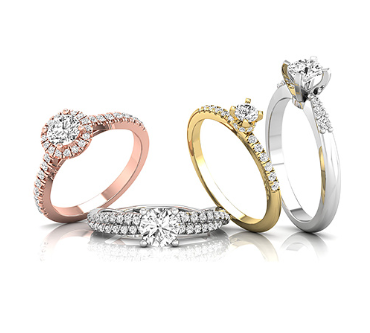
When it comes to selecting the perfect engagement ring, one of the most crucial decisions you’ll make is choosing the right metal for the band. The metal not only contributes to the overall aesthetic of the ring but also influences its durability, maintenance requirements, and even cost. With a myriad of options available, from traditional classics to contemporary favorites, finding the ideal metal that suits your style, lifestyle, and budget requires careful consideration.
Gold
Gold has long been a favored choice for engagement rings due to its timeless appeal and versatility. It’s essential to note that pure gold (24 karats) is too soft for everyday wear, so it’s typically alloyed with other metals for durability. Commonly used gold alloys for engagement rings include:
– Yellow Gold: Classic and warm, yellow gold is a traditional choice that complements many skin tones.
– White Gold: Plated with rhodium to achieve its silvery-white appearance, white gold is elegant and pairs well with diamonds.
– Rose Gold: Exhibiting a romantic blush hue, rose gold has gained popularity in recent years for its vintage yet modern look.
Platinum
Renowned for its durability and purity, platinum is a premium choice for engagement rings. It’s naturally white and hypoallergenic, making it ideal for those with sensitive skin. Platinum’s density and weight give rings a substantial feel, and its patina finish develops a lovely sheen over time. Keep in mind that platinum is more expensive than gold due to its rarity and density.
Palladium
Similar in appearance to platinum but more affordable, palladium is a lightweight yet durable metal. It shares platinum’s hypoallergenic properties and naturally white color. Palladium engagement rings offer an excellent alternative for those seeking a platinum-like look without the higher price tag.
Silver
While silver is a budget-friendly option, it’s less commonly used for engagement rings due to its tendency to tarnish and scratch easily. Sterling silver, an alloy of silver containing 92.5% silver and 7.5% other metals (usually copper), is more durable than pure silver but still requires regular maintenance to retain its shine.
Titanium
Titanium is an increasingly popular choice for contemporary engagement rings due to its exceptional strength, lightweight nature, and affordability. It’s also hypoallergenic and available in various colors through anodizing processes.
Choosing the Right Metal
When deciding on the metal for your engagement ring, consider your lifestyle and preferences. If you adore the warm glow of gold and enjoy timeless elegance, yellow or rose gold might be perfect for you. For a brilliant white metal that requires minimal maintenance, platinum or white gold are excellent options. If durability and budget are priorities, palladium or titanium could be ideal alternatives.
Ultimately, the choice of metal for your engagement ring is a personal one. Take the time to explore different options, visit reputable jewelers, and try on various styles to see which metal resonates with you. Whether you opt for a classic yellow gold solitaire or a sleek platinum pavé setting, your chosen metal should not only showcase the beauty of your ring but also symbolize the enduring commitment it represents.
In conclusion, selecting the right metal for your engagement ring is a significant decision that involves balancing aesthetics, practicality, and personal preference. By understanding the characteristics of different metals and considering your lifestyle and budget, you can confidently choose a metal that enhances the beauty and longevity of your engagement ring—an enduring symbol of love and devotion.

